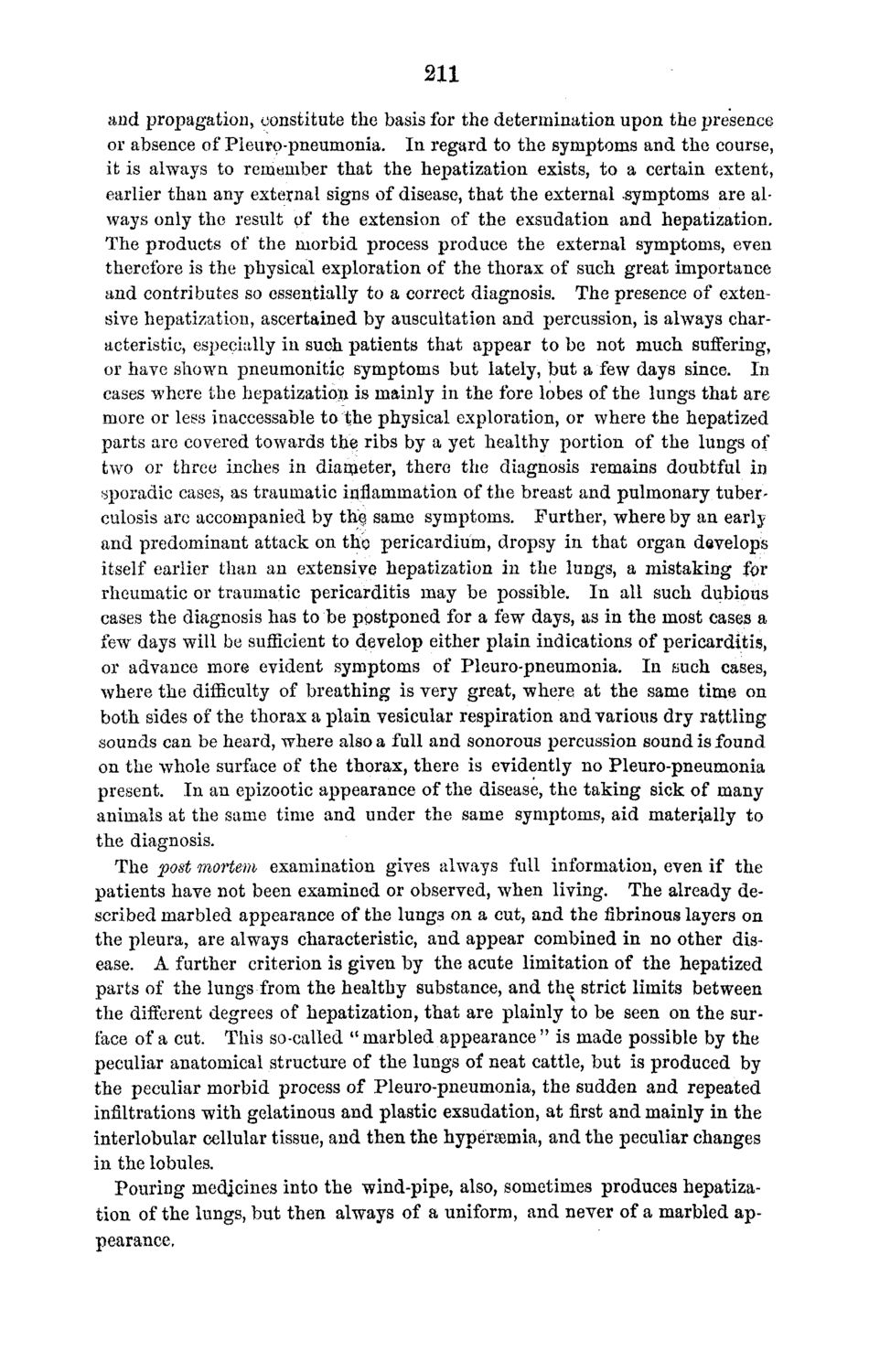| |
| |
Caption: Board of Trustees Minutes - 1870
This is a reduced-resolution page image for fast online browsing.

EXTRACTED TEXT FROM PAGE:
211 and propagation, constitute the basis for the determination upon the presence or absence of Pleuro-pneumonia. In regard to the symptoms and the course, it is always to remember that the hepatization exists, to a certain extent, earlier than any external signs of disease, that the external symptoms are always only the result of the extension of the exsudation and hepatization. The products of the morbid process produce the external symptoms, even therefore is the physical exploration of the thorax of such great importance and contributes so essentially to a correct diagnosis. The presence of extensive hepatization, ascertained by auscultation and percussion, is always characteristic, especially in such patients that appear to be not much suffering, or have shown pneumonitic symptoms but lately, but a few days since. In cases where the hepatization is mainly in the fore lobes of the lungs that are more or less inaccessable to the physical exploration, or where the hepatized parts are covered towards the ribs by a yet healthy portion of the lungs of two or three inches in diameter, there the diagnosis remains doubtful in sporadic cases, as traumatic inflammation of the breast and pulmonary tuber'<• culosis are accompanied by th§ same symptoms. Further, where by an early and predominant attack on the pericardium, dropsy in that organ develops itself earlier than an extensive hepatization in the lungs, a mistaking for rheumatic or traumatic pericarditis may be possible. In all such dubious cases the diagnosis has to be postponed for a few days, as in the most cases a few days will be sufficient to develop either plain indications of pericarditis, or advance more evident symptoms of Pleuro-pneumonia. In such cases, where the difficulty of breathing is very great, where at the same time on both sides of the thorax a plain vesicular respiration and various dry rattling sounds can be heard, where also a full and sonorous percussion sound is found on the whole surface of the thorax, there is evidently no Pleuro-pneumonia present. In an epizootic appearance of the disease, the taking sick of many animals at the same time and under the same symptoms, aid materially to the diagnosis. The post mortem examination gives always full information, even if the patients have not been examined or observed, when living. The already described marbled appearance of the lung3 on a cut, and the fibrinous layers on the pleura, are always characteristic, and appear combined in no other disease. A further criterion is given by the acute limitation of the hepatized parts of the lungs from the healthy substance, and the strict limits between the different degrees of hepatization, that are plainly to be seen on the surface of a cut. This so-called " marbled appearance " is made possible by the peculiar anatomical structure of the lungs of neat cattle, but is produced by the peculiar morbid process of Pleuro-pneumonia, the sudden and repeated infiltrations with gelatinous and plastic exsudation, at first and mainly in the interlobular cellular tissue, and then the hyperemia, and the peculiar changes in the lobules. Pouring medicines into the wind-pipe, also, sometimes produces hepatization of the lungs, but then always of a uniform, and never of a marbled appearance,
| |